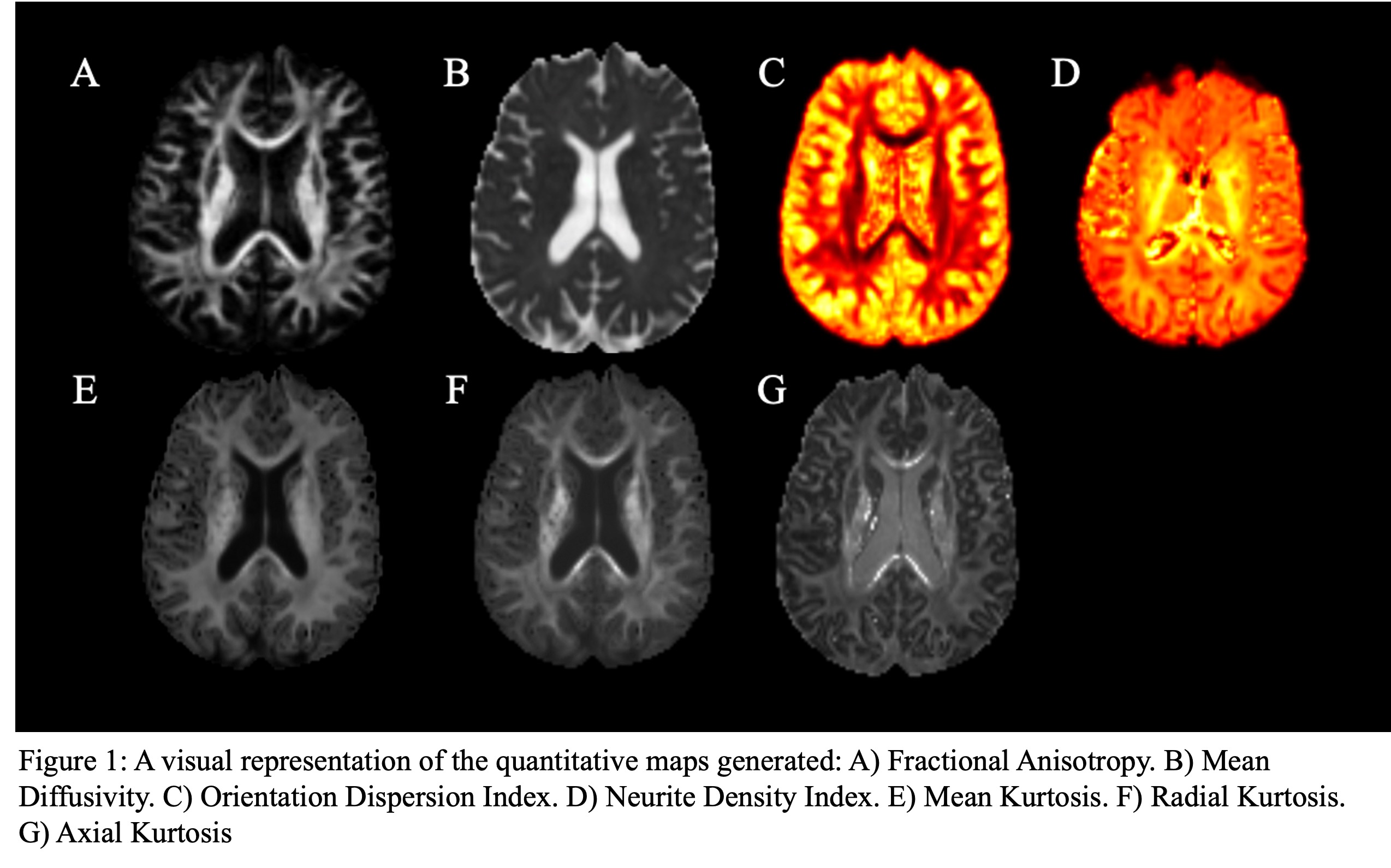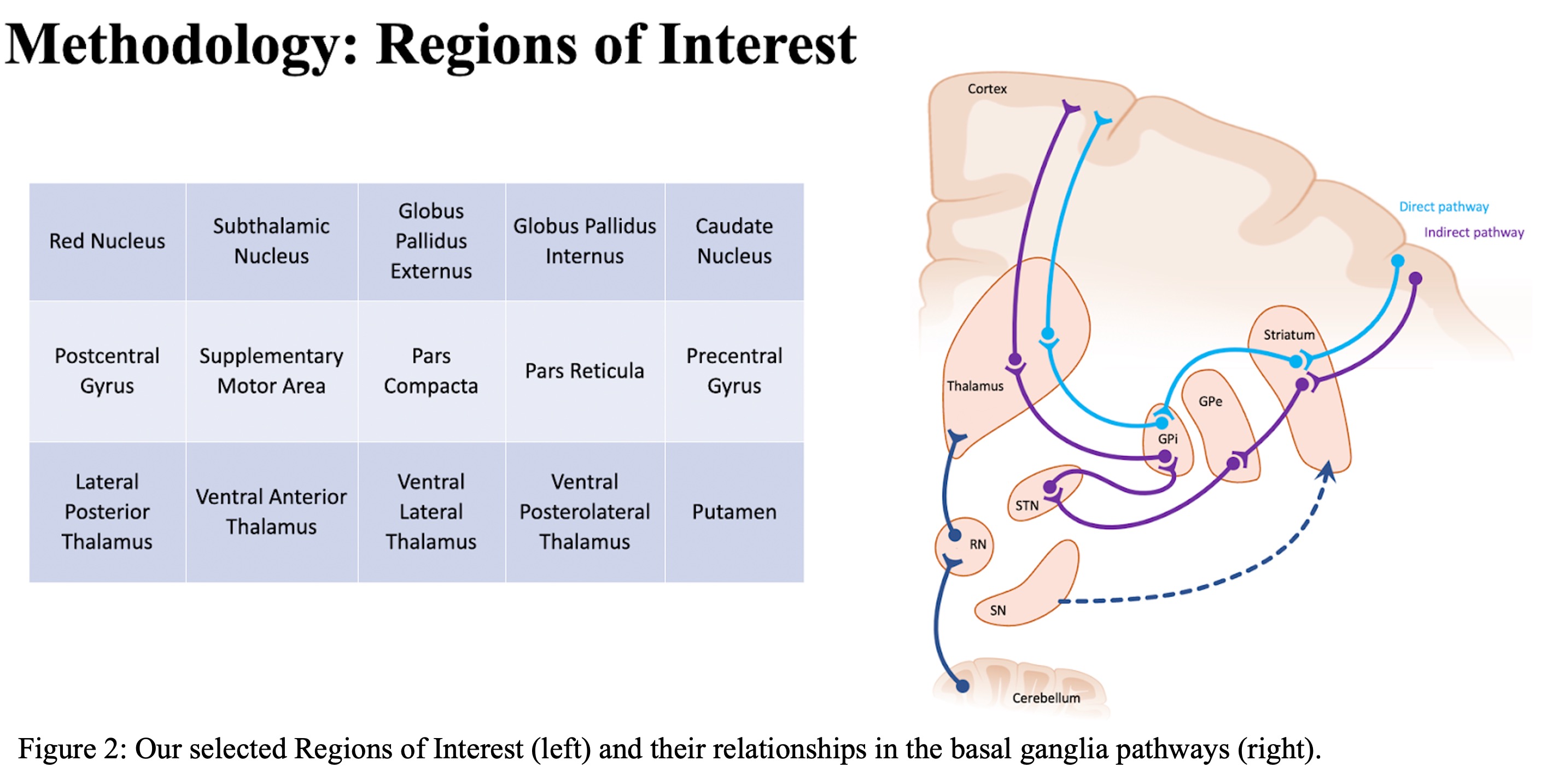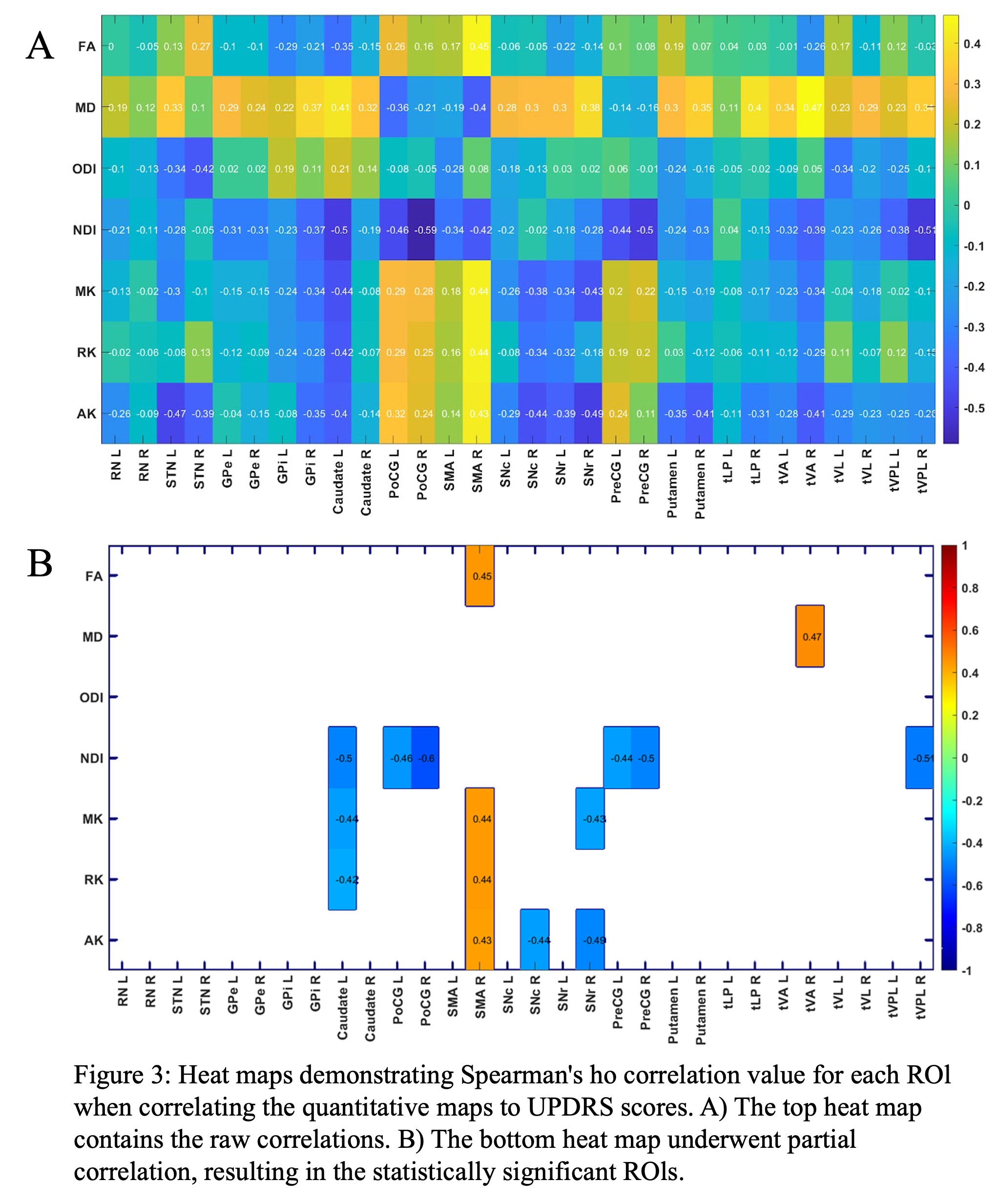Category: Parkinson's Disease: Neuroimaging
Objective: We aimed to correlate Unified Parkinson’s Disease Rating Scale (UPDRS) scores with quantitative maps to determine the ability to generate non-invasive biomarkers for Parkinson’s Disease (PD) severity.
Background: The UPDRS is used to rate the severity of disease in patients with PD. Assessment scores can vary due to subjectivity; however, quantitative maps such as diffusion tensor imaging (DTI), neurite orientation dispersion and density imaging (NODDI), or diffusion kurtosis imaging (DKI) can serve as objective assessments.
Method: We performed a retrospective study on 31 PD patients (11 females, 20 males, average age=64). The patients underwent 3T Siemens Prisma MR scanner using multi-shell diffusion imaging. DTI volumes were generated (Figure 1), leading to fractional anisotropy (FA) and axial diffusivity (AD). Additionally, NODDI was performed, creating the orientation dispersion index (ODI) and neurite dispersion index (NDI) maps. Also, performing DKI led to axial kurtosis (AK), mean kurtosis (MK), and radial kurtosis (RK). 30 regions-of-interest (ROIs) extracted from an AAL3 and basal ganglia atlas, with ROIs relevant to the basal ganglia signaling pathways (Figure 2). ROIs were registered to the patient’s diffusion space. The ROIs were then segmented, and the mean intensity was extracted. Finally, the quantitative data and the UPDRS scores were statistically analyzed via partial correlation, with age and gender being the controlled confounding variables.
Results: All ROIs are seen in Figure 3A, and the ROIs with the most significance are seen in Figure 3B. The left caudate, right postcentral gyrus, right precentral gyrus, and right thalamic VPL demonstrated the greatest significance. NDI from NODDI and MK and AK from DKI were the diffusion indices that were the most sensitive to the UPDRS scores.
Conclusion: Quantitative analysis demonstrates excellent potential in an objective, non-invasive assessment of PD. No other studies have correlated UPDRS scores and multi-spectral weighted imaging, highlighting its novelty. In the future, we hope to use these results to develop non-invasive biomarkers that can predict PD disease course and severity.
To cite this abstract in AMA style:
I. Shelley, I. Ailes, M. Syed, K. Shivok, J. Miao, L. Krisa, F. Mohamed, R. Sergott, T. Liang, A. Sharan, M. Kogan, C. Wu, M. Alizadeh. Examining the Correlation Between Multi-Spectral Diffusion Weighted Imaging Quantitative Maps and Unified Parkinson’s Disease Rating Scale Scores [abstract]. Mov Disord. 2023; 38 (suppl 1). https://www.mdsabstracts.org/abstract/examining-the-correlation-between-multi-spectral-diffusion-weighted-imaging-quantitative-maps-and-unified-parkinsons-disease-rating-scale-scores/. Accessed December 15, 2025.« Back to 2023 International Congress
MDS Abstracts - https://www.mdsabstracts.org/abstract/examining-the-correlation-between-multi-spectral-diffusion-weighted-imaging-quantitative-maps-and-unified-parkinsons-disease-rating-scale-scores/



